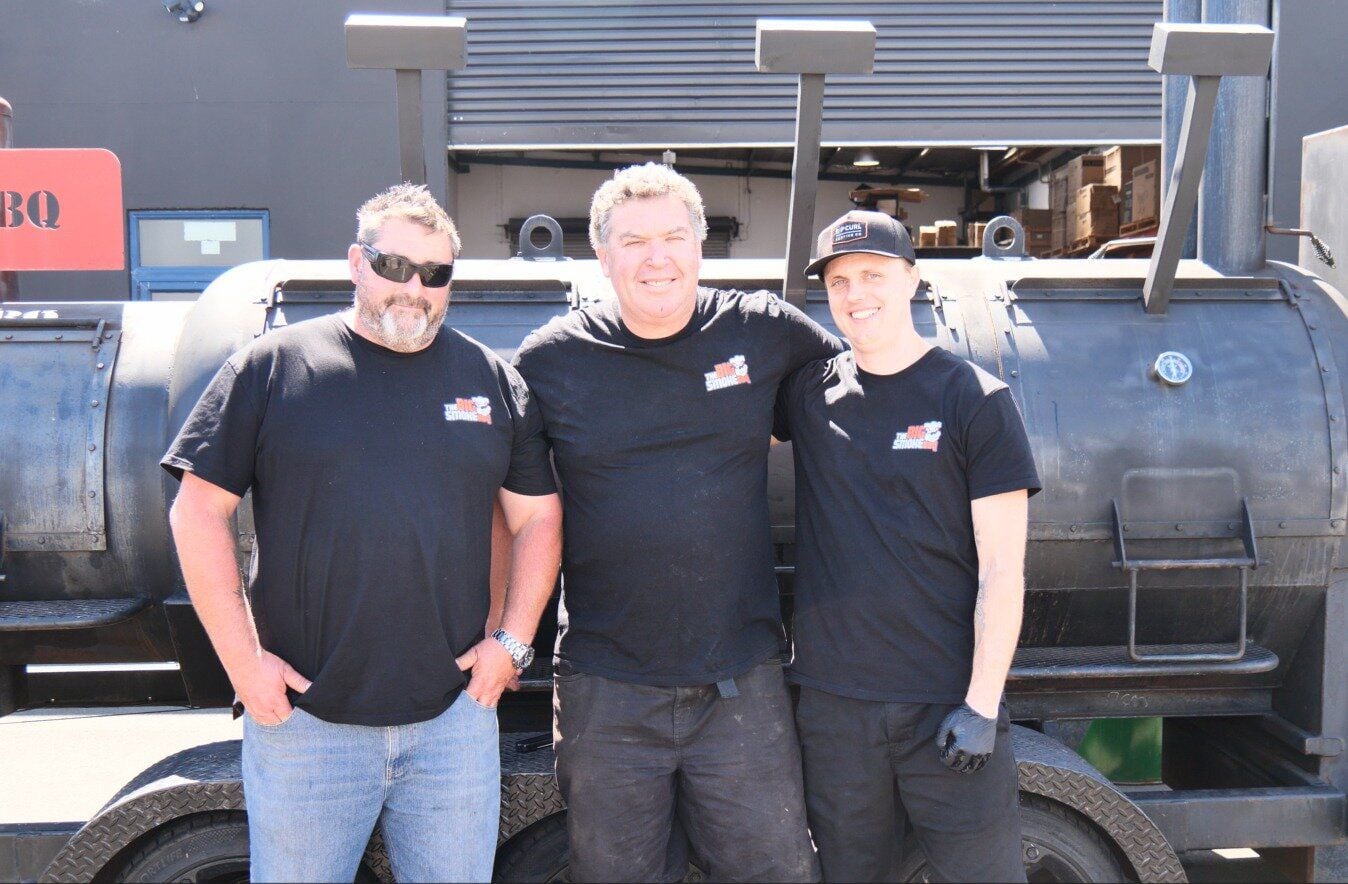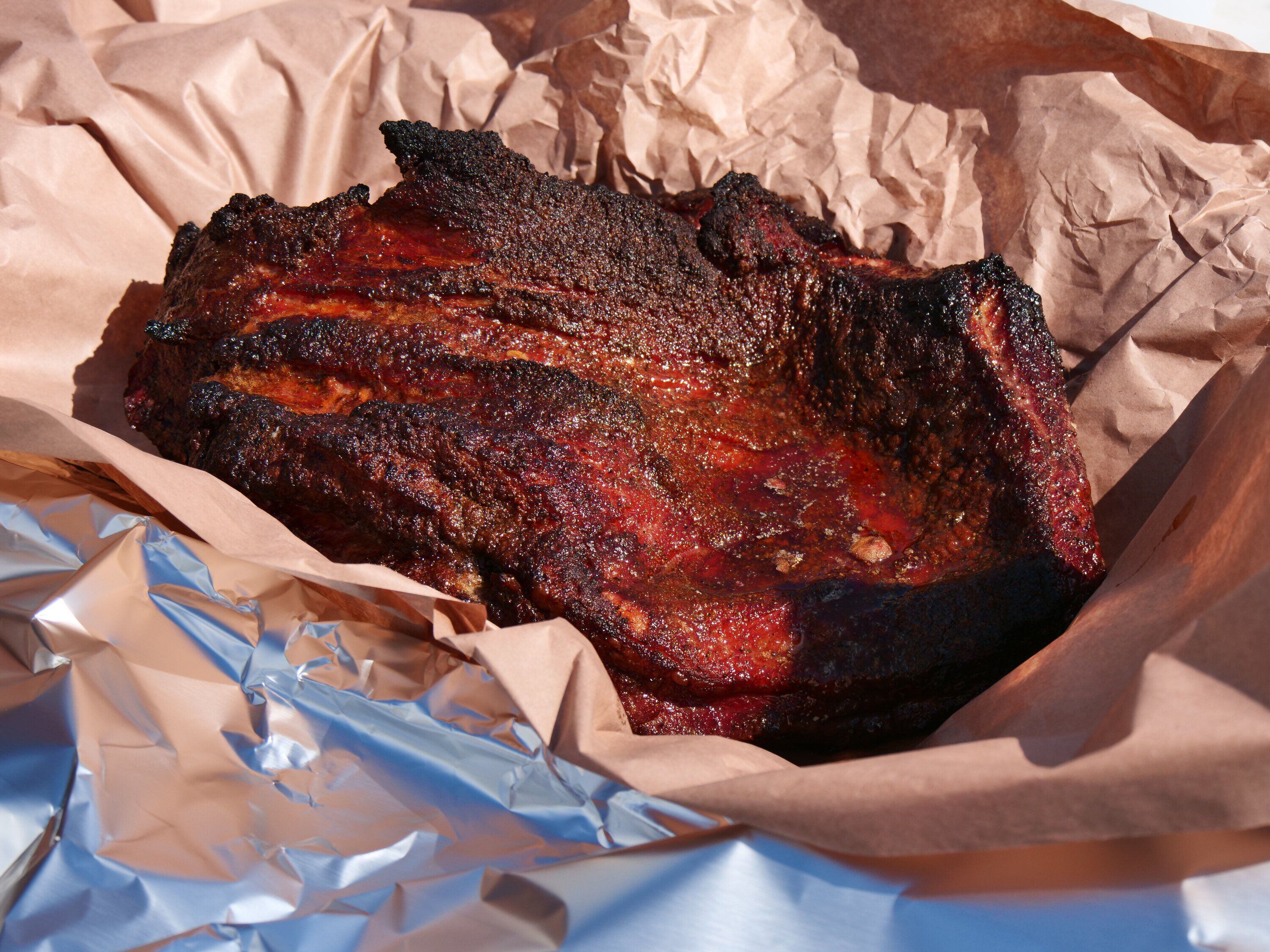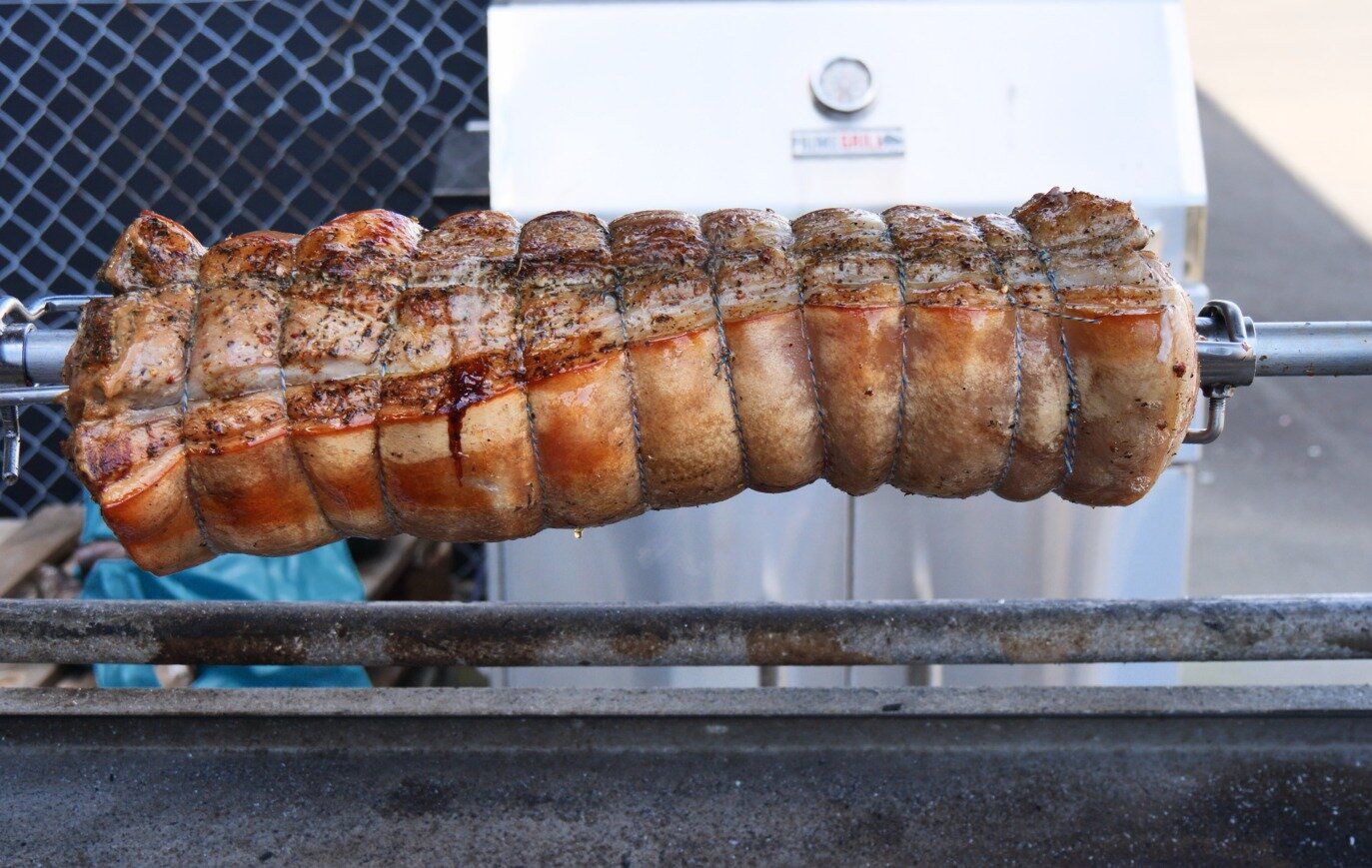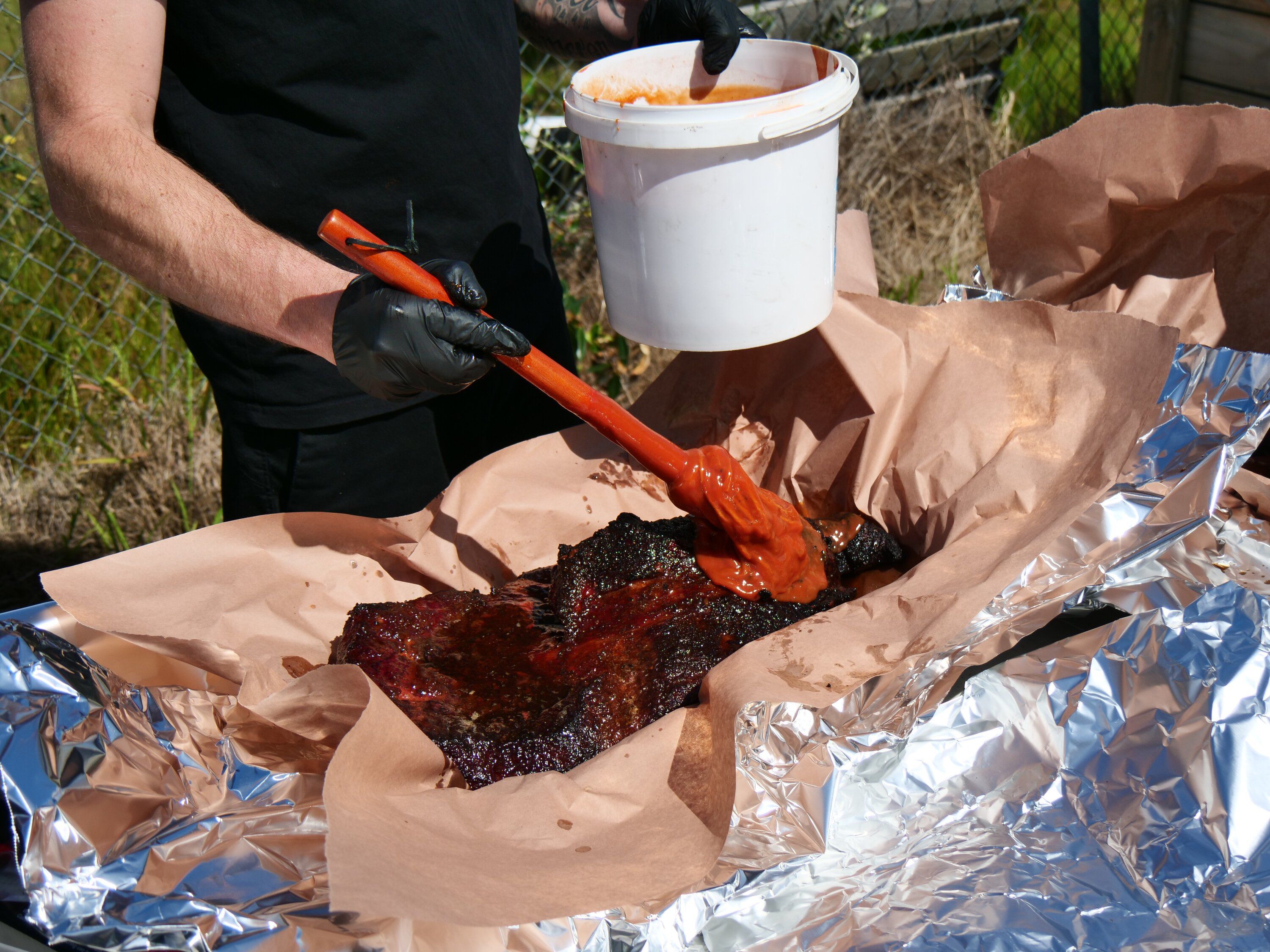The founding father of American-style barbecue in New Zealand, Mike Jefferies, will visit the Pensacola EggFest in Florida on November 10.
He will cook for 450 VIPs in what is the second year he has participated in the Pensacola competition.
“It was nerve-racking cooking American barbecue for Americans. My way of doing it is a bit different,” he said.
“I thought, ‘I’m in too deep. I’m just doing what I know my way.’”
Jefferies’ founding father credentials were solidified in 2017 when he joined forces with American barbecue personality Moerlando “Big Moe” Cason when he was selected to be on Cason’s BBQ World Championship team.
“They invited me back after that,” Jefferies said.
He has now been a part of Cason’s team for over five years.
“Everyone is really friendly and open.”
When Jefferies and fellow pitmasters Shane Southby and Todd Richardson met up with SunLive, the three had started getting the brisket ready at 4.30am ready for a cooking tutorial the same day.

(From L to R) Mike Jefferies, Shane Southby and Todd Richardson.
“We are cooking all day, and none of us will probably eat all day just because we take on enough of the smoke.”
Jefferies said barbecue is almost a religion in the States, and each state does things slightly differently and prioritises different types and cuts of meat.
“Texas is brisket, Carolina is ribs. It’s different in different States.”
He likes to cook his brisket Iowa-style in honour of his mentor from Iowa, the Hawkeye State.
The one he had in the smoker had been cooking for 10 hours. He fed the smoker with hardwoods, as wood like Applewood, peach, or cherry burns too quickly for large pieces of meat.

The Brisket, about to be wrapped in peach butcher paper and put back into the smoker. Photo / Tom Eley
“When it’s not dry enough, the meat can get acrid or bitter, which it can easily do,” Southby said,
One of the most important tips Jefferies could give regarding low and slow cooking was timing and fire management.
“It’s got to be under a certain temperature; normally, I have everything at 275 fahrenheit.”
“Everything’s in fahrenheit with barbecue.”
Another tip from fellow pitmaster Southby is that for a good brisket, the quality of the smoke is the key.
“If you let your fire here burn down too much, you can get that dirty white smoke,” he said.
An essential tool is a meat thermometer, as two similar pieces of meat of similar sizes might be ready at different times, Jefferies said.
“One could be the same size, and it could be an hour away.”
The brisket will be set in a tray in the smoker, and once it takes on enough smoke and colour, they will mop it with a signature mopping sauce.
After the mopping, they wrap the meat in peach butcher paper and tin foil to lock it in moisture and put it back in the smoker for the final finish.
After they had finished cooking, Jefferies said they would let the meat rest in a cooler to lock in the juices.

Rolled Pork shoulder, slowly cooking away ahead of a barbecue tutorial earlier in the day.
Jefferies hosts various cooking tutorials throughout the year as he likes to share the tips and tricks he has learnt over the years.
“The thing that we love is food brings people together. We’re all here for the same reason and need to share.”



0 comments
Leave a Comment
You must be logged in to make a comment.